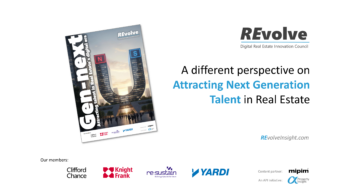Realcomm.com a technology and real estate intelligence integrator recently put together a webinar on the state of the art for building data integration. Here are some of the highlights from the seminar:
Asset managers, owners and occupants that have embraced integrating all possible building data into their facilities operations and property management have seen returns on investments in under a year. They have also contested happier more comfortable occupants. What is clear is that new platforms from numerous vendors are now able to integrate disparate real time data from building sensors (e.g. filters, motion, temperature, humidity, damaged circuits or damper positions, faults, and more) with existing historical information and use this information to do a better job of predictive modeling and system tweaking. For example, weather and occupant sensor counts can be compared to past patterns of heat gain and the HVAC adjusted to keep everyone comfortable and in a well-lit but not over-lit environment.
Data from leases such as expirations and operational expenses can also be integrated into a system that begins with data, generate reports & visualizations and then feeds the information to the appropriate staff (facilities, asset managers, security people, and so forth) via smart phones, tablets, laptops and large displays with real time report updating. The key to all this data output is to translate it into usable systems, such as exception reports & warning signals – and provide information on how critical the repair or problem is should it worsen. This requires translation of technical data into simple reports in everyday business language.
Such building management systems allow much more proactive decision making and less crisis management. Air filters are changed when they are staring to become impaired instead of on a fixed schedule whether they need to be changed or not, and fewer inspections are needed as web enabled devices become more typical. Eventually all devices from the lights to the air flow to the air dampers to security cameras and motion sensors and fire extinguishers will be connected, but for now only a few leaders (such as Microsoft’s campus) have buildings that are fully connected and able to visualize problems or faults or concerns. Fans turn off in areas where no one needs them – such as car parks in the middle of the night- and operating costs savings occur.
All the experts say that you can’t control what you can’t measure and this could also be extended to management. You can’t manage what you can’t control. Among the many firms providing services in this arena are SkyFoundry and J2Inn , Selex-es , the Fischer Company, Angus Systems to name a few.
Don’t miss Norm Miller at MIPIM this year in the session: Transforming Real Estate into a Performance Asset
 By Norm Miller, PhD, Professor, University of San Diego nmiller@sandiego.edu
By Norm Miller, PhD, Professor, University of San Diego nmiller@sandiego.edu
Dr. Norm Miller will be presenting at MIPIM Thursday afternoon in the Innovation Forum along with Schneider Electric, ACTINEO and PCA Architects. Four students from the University of San Diego will be attending MIPIM sessions and reporting lessons learned.
Image: Siemens



